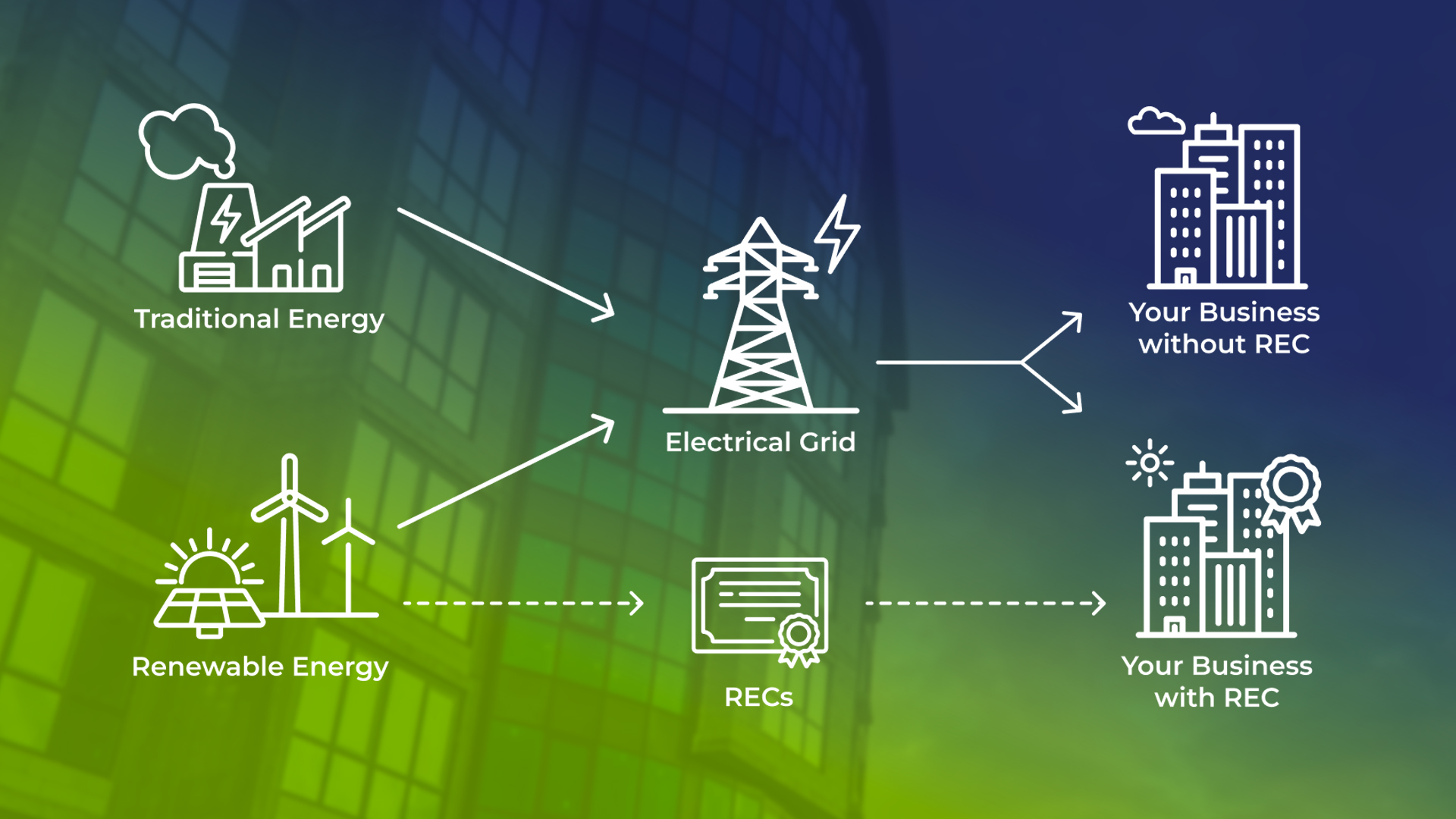
Regardless of where it comes from, all sources of electricity, from fossil fuels and nuclear to wind and solar, are indistinguishable from one another once they flow through the power grid. Since the power grid doesn’t see a difference between types of energy, and all types of energy share the same grid, Renewable Energy Certificates (REC’s) exist as a way to track, quantify, and trade the renewable energy that companies consume.
How Do REC’s Work?
The demand for sustainable energy rises every year, with governments and companies around the world pledging to generate certain percentages of their energy from renewable sources. REC’s allow organizations to prove they’re meeting their goals, tracking the tangible positive impact they’re making on the environment.
Some states in the U.S. have mandated that businesses in certain fields should draw a certain percentage of the energy they use from renewable sources. While these guidelines vary from state to state, the average minimum requirement for businesses hovers around 40%.
To use renewable energy sources, businesses buy REC’s from energy suppliers for each megawatt hour they need to consume. This allows renewable energy to be more accessible to users who don’t have the means to generate it themselves.
Renewable Energy Certificates are created by renewable generation projects and serve as a record for each megawatt hour of electricity they generate. Each REC contains a comprehensive list of data on the units of energy they recognize. Here is some of the information included:
- Certificate Data
- Tracking I.D.
- Type of Renewable Fuel
- Location of its Facility of Origin
- Emissions Rate
This information helps track the type of energy, its history, and purpose to properly assess its impact on the environment.
How Are REC’s Beneficial to Businesses and Sustainability as a Whole?
Renewable Energy Certificates allow for sustainable energy to be quantified, and distinguished from nonrenewable energy types, but the benefits of this system don’t stop here. REC’s provide many advantages to both businesses and the sustainable future the world is gradually working to build. These include:
- Provides proof to businesses and customers that their energy is coming from a renewable source.
- Allows businesses to specifically purchase energy from renewable sources.
- Creates a tangible way for energy users to express their demand, preference, or support for renewable energy in a way that increases investment in those technologies.
REC’s vs. Carbon Offsets: What Is The Difference?
Renewable Energy Certificates are often compared to Carbon Offsets, but in reality, they are similar practices that accomplish two different purposes. While both are technically ways of tracking renewable energy and its use, REC’s are a way to distinguish renewable energy flowing through the grid from other types, as well as a way to track ownership of that energy.
Carbon Offsets function as a way to incentivize companies to invest in renewable energy, channeling their money into sustainable energy projects in order to “offset” or make up for the nonrenewable energy used by the company. This ensures companies that can’t or are unwilling to adopt sustainable practices for their own operations are still contributing to sustainability projects.
Trusted Commercial Energy Supply and Management
In a constantly evolving fiscal and environmental landscape, EnergyMark supplies energy to businesses and helps them manage how they use it. As an ESCO that directly supplies energy to major businesses across Western New York, your savings and efficiency are our highest priority.
EnergyMark offers REC’s helping businesses focused on the future track their renewable energy use, while incentivizing a more sustainable future. Contact us today to learn more.